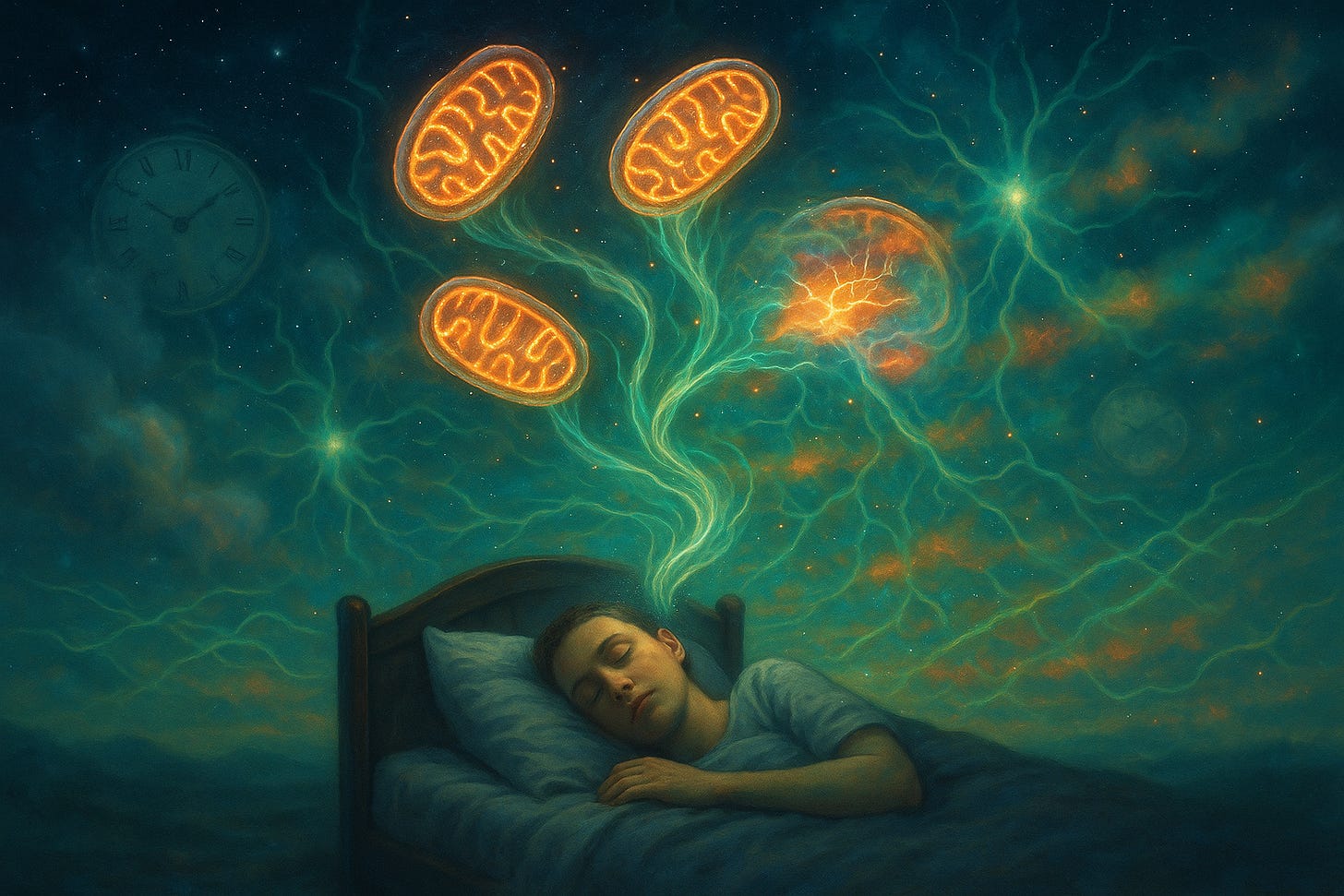Mitochondria: The Hidden Spark Behind Your Sleep Drive (And How to Fuel It Right)
Uncover how your cell's energy engines build sleep pressure—and simple tweaks to enhance recovery, cognition, and longevity.
Have you ever pulled an all-nighter and felt that irresistible pull toward bed, like your body is demanding a reset? Groundbreaking research in fruit flies shows this "sleep pressure" stems from mitochondria—the power plants in your brain cells—struggling with excess energy during wakefulness. By linking sleep directly to our core metabolism, this study reveals why quality rest is non-negotiable for peak performance, especially as we age or juggle demanding lifestyles.
Sleep, like ageing, may be an inescapable consequence of aerobic metabolism.
The Core Discovery
Building on the mystery of why we crave sleep after long hours awake, this study zooms in on specialized neurons in the fly brain that control rest. Through single-cell RNA sequencing, researchers found that sleep deprivation boosts genes for mitochondrial energy production and ATP synthesis in these key cells, while dialing back synaptic activity. It's as if prolonged waking creates an electron overflow in mitochondria, triggering fragmentation and repair signals—ultimately driving the need for sleep. As the paper notes: Sleep, like ageing, may be an inescapable consequence of aerobic metabolism.
Why This Matters to You
This discovery ties right into everyday life, showing how mitochondrial stress from skimping on sleep could erode your cognitive edge and accelerate aging. For habits, it means consistent rest helps mitochondria recover, preserving energy for sharp thinking—crucial if you're over 40, when natural declines make recovery slower. Therapies might target this for insomniacs or shift workers, potentially extending healthspan. And consider personal factors: high-intensity lifestyles amp up electron leaks, while gender differences (like estrogen's role in women) could influence effects, making tailored routines key for long-term vitality.
Looking Ahead
This breakthrough opens exciting paths forward, from bioengineered tools like electron "relief valves" to reduce sleep needs, to apps tracking mitochondrial biomarkers for personalized rest advice. Future studies might map this in humans, exploring links to disorders like Parkinson's or even anti-aging interventions. Practically, you could experiment with mitochondrial boosters like CoQ10, but questions remain: How do diet and exercise fine-tune this in diverse groups, from athletes to desk-bound pros?
A Word on Risks and Realities
While these insights promise game-changing tools for better sleep, we must weigh the downsides thoughtfully—rushing mitochondrial tweaks could backfire, causing energy imbalances or unintended stress on cells. Ethically, access to such enhancements raises fairness issues, potentially widening health gaps. Key caveats include the fly model's limits; human trials are needed to confirm effects across ages, genders, and lifestyles, as the study focused on specific neurons without full-brain context.
What This Could Mean for You
Armed with this knowledge, here's how to support your mitochondria for deeper sleep and sustained energy:
Sync your rhythm: After a late night, prioritize 7-9 hours of recovery—add a 20-minute walk to burn excess ATP and ease pressure, ideal for busy parents or professionals.
Fuel smartly: Incorporate CoQ10-rich foods (like salmon) or supplements to aid electron flow, especially if you're female or over 50 when mitochondrial efficiency dips.
Track and tweak: Use a wearable to monitor sleep quality; if lifestyle factors like stress fragment your rest, try evening meditation to mimic the study's fusion benefits—consult a doctor for personalized plans.
Explore the Full Study
Sarnataro, R. et al. Mitochondrial origins of the pressure to sleep. Nature (2025). Direct link to the original study.


